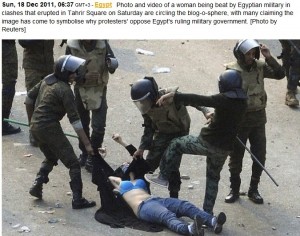
Last week groups of street vendors in the African country of Malawi harassed and attacked women, groping and stripping them naked if they were wearing pants or short skirts instead of a traditional dress.
There used to be a 30-year ban against women wearing pants or mini-skirts in Malawi, but it ended in 1994. Some men apparently think there should still be a ban and last week’s attack is just one example of their treatment of women in the capital Lilongwe and other towns like Mzuzu and Blantyre.
“They beat them up and stripped them naked, claiming they did not follow the tradition,” said Seodi White, a rights activist and protest organizer. “Attacking women in trousers is an outrage. We are a democracy, they’re taking us back to the dark ages.”…
“Women have a right to wear what they want,” White said… “This is an embarrassment to our nation and an outright contempt for women.”
On Friday, hundreds of women and some men gathered to protest the attacks, wearing pants, miniskirts and leggings in a show of solidarity. Some women wore white T-shirts that said, “Real men don’t harass women,” and “Today we buy your merchandize, tomorrow you strip us naked!” since the most recent attacks were by store vendors. They chanted, “we are strong, we are strong,” and demanded an end to the attacks.
“Some of us have spent our entire life fighting for the freedom of women,” Malawian Vice President Joyce Banda told the protesters. “It is shocking some men want to take us back to bondage.”
Their protest drew the attention of President Bingu wa Mutharika and he warned the perpetrators to stop the attacks, saying women have a right to wear what they want: “I will not allow anyone to wake up and go on the streets and start undressing women and girls wearing trousers because that is criminal.”
He also ordered police to arrest anyone attacking women over their clothing and 15 men have already been arrested.
Street harassment and violence is often a mechanism for social control and that motive is clear in these attacks: men want to control how women dress. But sorry men, the women aren’t going to stand for it and neither is the president!




